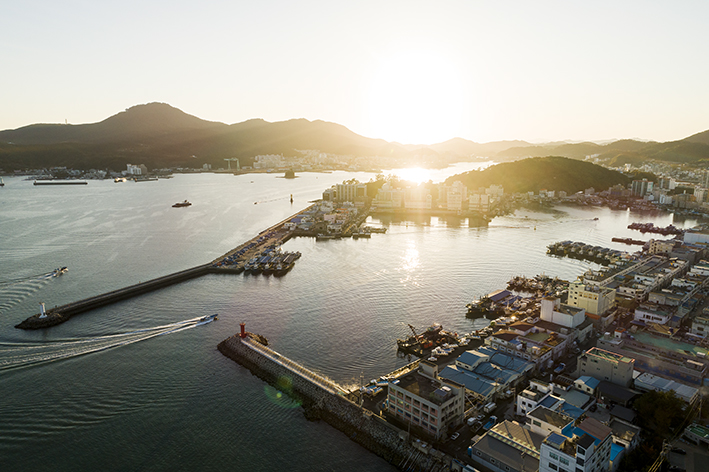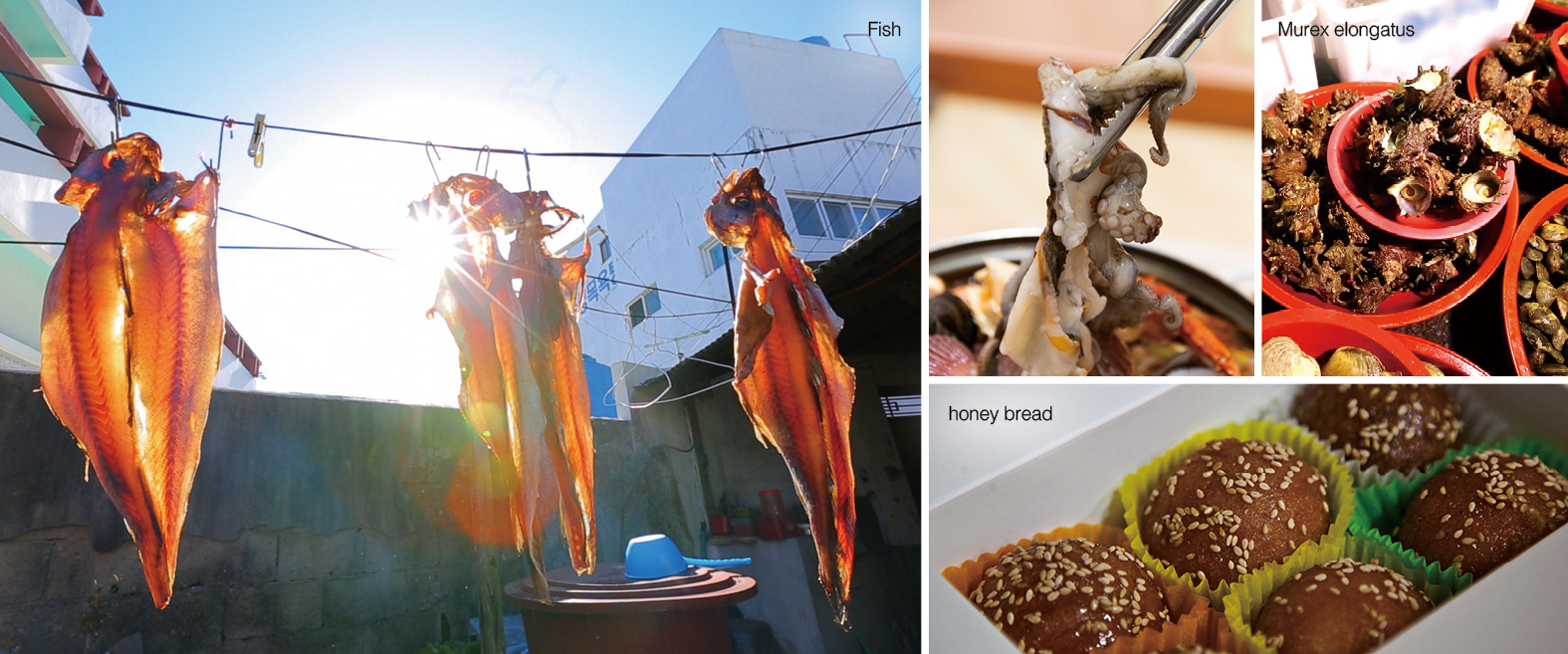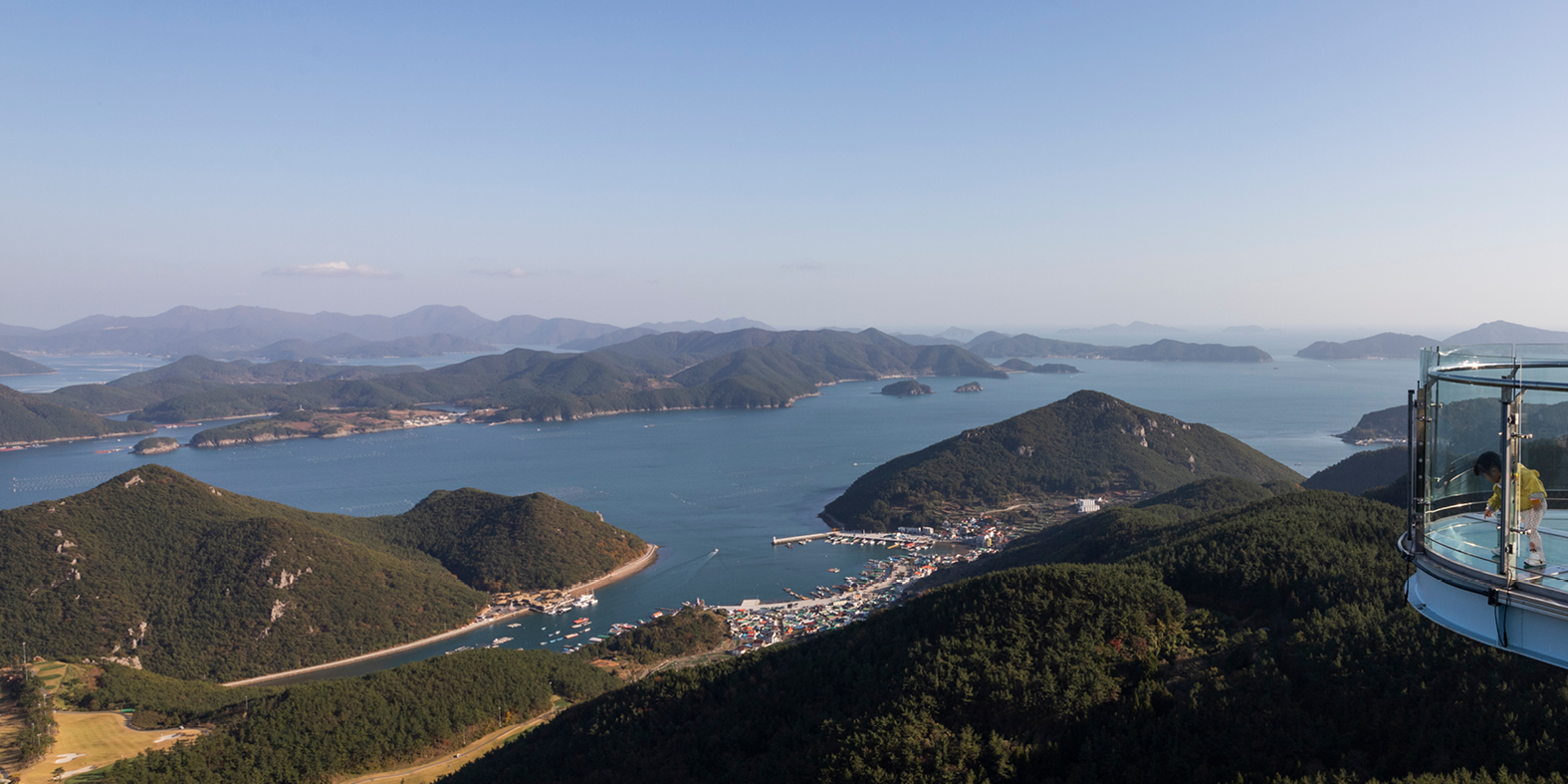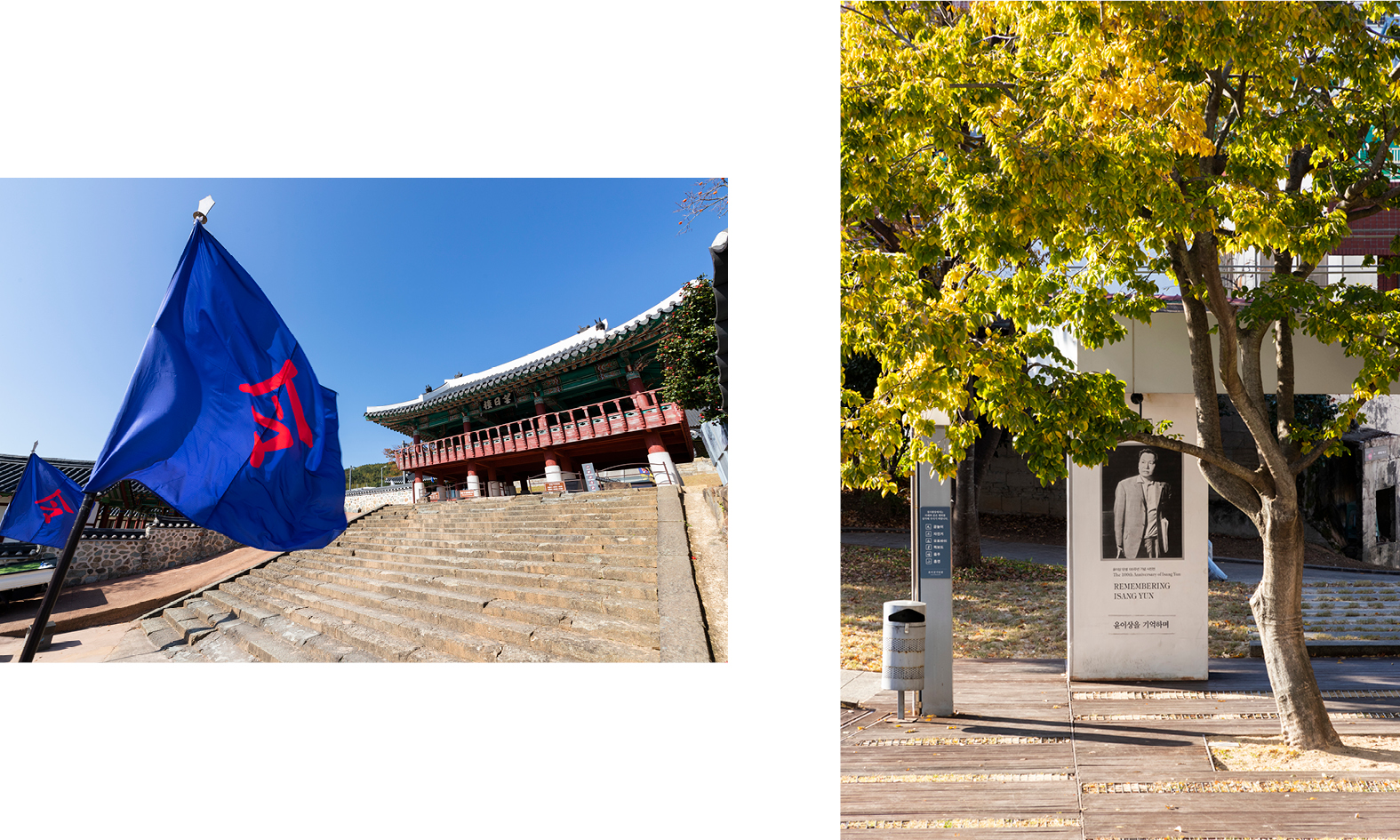한식 읽기 좋은 날
Vol 45. Gukbap, the Epitome of
Tongyeong’s Food Culture and Arts Created by the Sea
Korean Food Tour
Tongyeong is surrounded on three sides by the sea, and 151 inhabited and uninhabited islands. Historically, it was a strategic military base where Admiral Yi Sun-sin was active, and due to its early adoption of diverse cultures, it fostered many artists representing Korea, such as novelists Park Kyongni and poets Yu Chi-hwan, Kim Chunsu, and Kim Sang Ok.
On the other hand, just as Tongyeong got its name due to the location of Samdo Sugun Tongjeyoung (naval headquarters of three provinces) that was in charge of the naval forces of Gyeongsang-do, Jeolla-do and Chungcheong-do since the middle of the Joseon Dynasty, Tongyeong developed a unique food culture as a result of the dishes of three provinces coming together and merging.
I visited Tongyeong, which is called the Special Self-governing Gastronomic City, and learned that it has a unique food culture as a result of the fusion of the foods of the three provinces.
Article. Lee Jongcheol Photo. ⒸKorea Copyright Commission

The Root of Tongyeong’s Flavor, the Fused Flavor of Three Provinces of Gyeongsang, Jeolla, and Chungcheong
In Tongyeong in October, when the autumn colors are everywhere, the flawless blue autumn sky and the ocean are breaking down their boundaries from each other. The horizon that stretches out before my eyes only four hours after leaving Seoul makes me forget about the fatigue of travel. The raw nature, which does not require any special “embellishment” or “modification,” attracts the traveler's heart at once.
Tongyeong is a city in Gyeongsang-do. However, Tongyeong cannot be described only as an administrative district because of its food culture. For nearly 300 years after Tongyeong(Tongjeyeong) was established in 1605, and until it was abolished in 1895, Tongyeong was under the jurisdiction of Samdo Sugun Tongjeyoung, not Gyeongsang-do. It was a special self-governing district that united the coastal areas of Gyeongsang-do, Jeolla-do, and Chungcheong-do and the military bases of the islands, so Tongyeong was a central city where the headquarters of Samdo Sugun Tongjeyoung was located. Thus, the food of Tongyeong came to have unique and special flavors created by combining the characteristics of Gyeongsang, Jeolla, and Chungcheong provinces.
Poet Kang Jeyun called Tongyeong “a town of a beautiful port, artists, and flavors.” Kang, who wanted to find the source of the special flavor of Tongyeong, which is in Gyeongsang-do, but not just in Gyeongsang-do, wrote the following.
“Tongyeong, which boasts of the best scenery, is the town of a beautiful port, artists, and flavors. Its charm comes from its flavors. The flavor is created when there are abundant local products. If you are busy filling your stomach, you don’t have any energy to discuss the flavors of food. This is why the poorer regions have less delicious food. Flavor comes from abundance, which leads to the charm of the food. That’s how a culture is formed. Tongyeong is a land of plenty. So, the food in Tongyeong is especially delicious.”
As the poet said, if you taste the food of Tongyeong today, you will find that it is impossible to simply describe the depth and breadth of its flavors.

Gukbap That Heartily Filled the Fishermen’s Stomach in the Chilly Season
As a city of fishermen, there are many types of gukbap and haejangguk in Tongyeong. Sirakguk is the most eaten dish in Tongyeong, and there is a dialect that refers to siraegiguk(dried radish leaf soup). Sirakguk is made by simmering the head of eels, mixing in the soybean paste and boiling it again with radish tops, and when it is eaten, the sancho(jepi: Chinese pepper tree) powder, laver powder, finely chopped chili, and chive salad are added according to the eater’s palate. The hot soup mixed with the scent of spicy sancho powder creates a cooling taste. Together with sirakguk, the most loved food among the Tongyeong people is jolbokguk(panther puffer soup). The soup made with panther puffer, which is a small carp, water parsley, and bean sprouts, is rich yet clean.
There are two ways to eat the soup. First, you can add a bit of vinegar, which makes the soup richer. Second, you can have the soup whole by holding the earthen pot in your hands. That’s how you enjoy it.
It may sound unfamiliar, but there is a dish called soogimimaeuntang(spicy stingfish stew). Soogimi is a member of the rockfish family. Since it is not farmed, only the ones caught at sea are used. The maeuntang lovers regard spicy scorpion fish stew, spicy rockfish stew, and spicy stingfish stew as the best maeuntang dishes. It is seasoned only with red chili powder, and the soup is refreshing and clean while the fish meat is soft and chewy.
It feels like something is missing if I don’t eat Chungmu gimbap when I go to Tongyeong. In the 1960s and 1970s, the Tongyeong Passenger Terminal, which is the center of the sea route between Busan, Yeosu, and Geoje, was always crowded with fishermen and merchants, and the snacks for them were always popular. Chungmu gimbap made its appearance at this time, and it became popular because it was simple and didn’t spoil. Chungmu gimbap consists of rice wrapped in raw laver, seukbak kimchi(radish kimchi), and sirakguk. Seukbak kimchi with refreshing and spicy flavors, rather than salty taste, boasts of its crips texture. Since it was sold to fishermen who set sail, toothpicks were used instead of chopsticks.
If Gyeongju has hwangnam bread, Anheung has jjinpang(steamed bun with the red bean paste filling), and Tongyeong has Omisakkulpang(Omisa honey bread balls). In the 1960s, when the owner of the Omisa Honey Bread Ball Store was rationed with flour, he made and sold bread one by one, and it is said that it was very popular. There was no signboard at this store, so people called it “the bakery next to Omisa” for a long time. Omisa was the name of the dry cleaner’s next to the bakery. As years passed, Omisa closed, and the honey bread bakery next to Omisa that was called “the store next to Omisa” eventually was named “Omisa.” It is made by frying the dough filled with red bean paste, putting it in a sticky starch syrup, and sprinkling sesames over it. The look of the owner with an apron making bread balls with the utmost sincerity reminds me of “master artisan.” It opens around 10:00 in the morning, and closes at around 15:00 to 16:00 after using all the day’s red bean paste quantity.

Tongyeong, the City of the Sea and the Home of History and Life
The representative figures of Tongyeong are Admiral Yi Sun-sin, who is symbolic in cultivating Tongyeong, and Yisang Yun, a composer who has made Tongyeong a world-class artistic city in contemporary times. First, just following the traces of Yi Sun-sin everywhere in Tongyeong is a wonderful course to travel in Tongyeong. There are many places to visit: Hansan Island, which is the stage of Admiral Yi’s poem that starts with “Sitting alone one the castle under the bright moon in Hansan Island…” and where the fierce battle at Hansan Island took place; Chungnyeosa Shrine where General Yi’s tablet is enshrined, and the ancestral rites for him are performed; Chakryangmo, a tomb made by the local public to honor Admiral Yi after the Imjin War; Samdo Sugun Tongjeyeong; and Yi Sun-sin Park. Most of the old buildings of Samdo Sugun Tongjeyeong disappeared after the Japanese colonial period, but it boasts of a larger scale than expected after 12 offices, Baekhwadang, Unjoodang, etc., were restored. Thankfully, Sebyeonggwan, which is considered as the central building of Samdo Sugun Tongjeyeong, remains undiminished. The large signboard seems to represent the majesty of Sebyeonggwan, which is the first thing I see when I pass the entrance. The scenery of the backyard seen through the pillars is like a painting.
On the other hand, the traces of composer Yisang Yun, who stayed in Berlin, Germany, for nearly half of his life, and missed Tongyeong until his death, can be found at the Yisang Yun Museum located in Docheon-dong, Tongyeong. On the 2nd floor of the museum, his cello and violin, which he played from his school days, and several handwritten scores, including the opera <Simi Tjong>, that he composed from 1971 to 1972. Yisang Yun’s music was unique and fresh to foreigners, as it combined the Eastern philosophies of Confucianism, Buddhism, Taoism, etc., that he was interested in, and the Western composition methods he studied in Europe. This is the reason that his music, which beautifully portrays the harmony of the East and the West, has gained worldwide fame.
Right next to the Yisang Yun Museum, there is “Berlin House” that was made by reducing the size of the actual house in Berlin to a quarter of the size. In the second floor are the reproduction of Yun’s study and living room where he worked. A desk with his sheets as if his warmth still exists, a cozy sofa, and the piano are all used by Yun. The visitors can tour the place under the supervision of the staff, who also provides a brief description.
I arrived at Tongyeong Concert Hall where I followed his footsteps. This is the place where the Yisang Yun Competition composed of the Tongyeong International Music Festival in April and the Yisang Yun Competition that alternatively holds the violin, cello, and piano categories in November. The tomb of Yisang Yun, who missed Tongyeong, is here. The tomb, which was relocated 23 years after his death, is close to the wide, blue, and calm Tongyeong Sea.
Tongyeong is one of the cities that have recently emerged as a popular tourist destination at home and abroad. It is close to the sea, so I can taste plenty of fresh seafood, and there are many places to visit, including a cable car overlooking the sea and the city, the Skyline Luge where I can feel the speed by riding a track without a motor, and the Dongpirang and Seopirang villages with beautiful alleys. Dongpirang Mural Village became popular on word of mouth after murals were drawn on the walls of dilapidated houses that were about to be demolished. When I go up the hill, I can see the Tongyeong Port, which is called the Naples of the East.
The houses are densely packed, and the ships and islands are scattered on the calm sea. It is fun to appreciate the small and cute drawings by maneuvering myself through the alleys. Musical notes are produced from the sea and the waves by the musician, who faced the quiet and peaceful scenery of Tongyeong, and it is challenging for myself to draw or to transfer to paper from imagination. Our stories are created by looking at the densely packed houses by the novelist, and by the words of the poets who depicted magnificent views – I thought that the famous artists from Tongyeong became who they were due to the people, who unfolded their talents as much as they wanted to protect and praise this place, and finished my tour of Tongyeong on a warm late autumn day.



 한국어
한국어
 English
English






